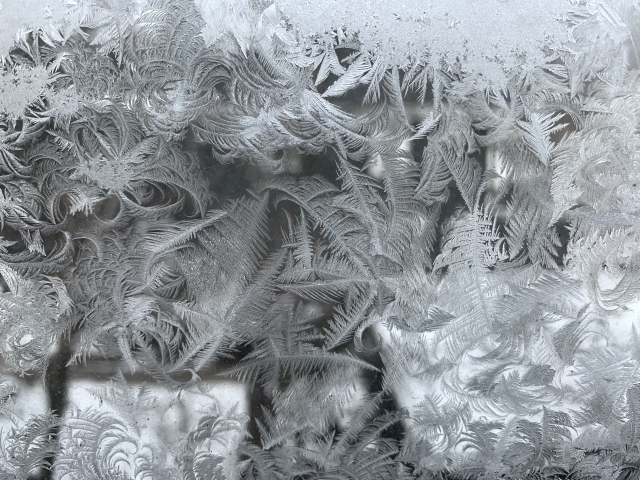Frost’s Brush
This photo was taken of my bedroom window, looking out over my neighbor’s home on a frigid February afternoon. In it, the beautiful, chaotic patterns of frost are shown, influenced by the natural physics of thermodynamics. For starters, frost forms when a thin, usually poorly insulated window separates two masses of air with very different properties: in this situation, cold air on the outside was separated from warm, moist air on the inside. The water vapor in the warm air is drawn to the window pane, where it freezes and turns into ice crystals.
This process is an example of the never-ending transfer of energy across different components of a system. In this system, the window separates an area of high thermal energy from an area of low thermal energy. Because of the fact that the window is not a perfect insulator, the thermal energy wants to travel from an area of high energy to low energy, moving toward a hypothetical steady-state situation (which hopefully will never be reached, or else my bedroom would be very cold). The frost is visible evidence of that effort, with the water vapor getting caught in the way, freezing on the window.
The intricate pattern formed can be explained by the imperfections in the window—anything from a speck of dust to a scrape in the window can cause the ice to form a completely different pattern. Overall, the window is stunning evidence of a fundamental physics concept.
Michael McNally
Description
Essay Title: Frost’s Brush
Category: Natural
Photo Number: 10208
School: Glenbard West HS
Teacher Name: Bruce Medic
